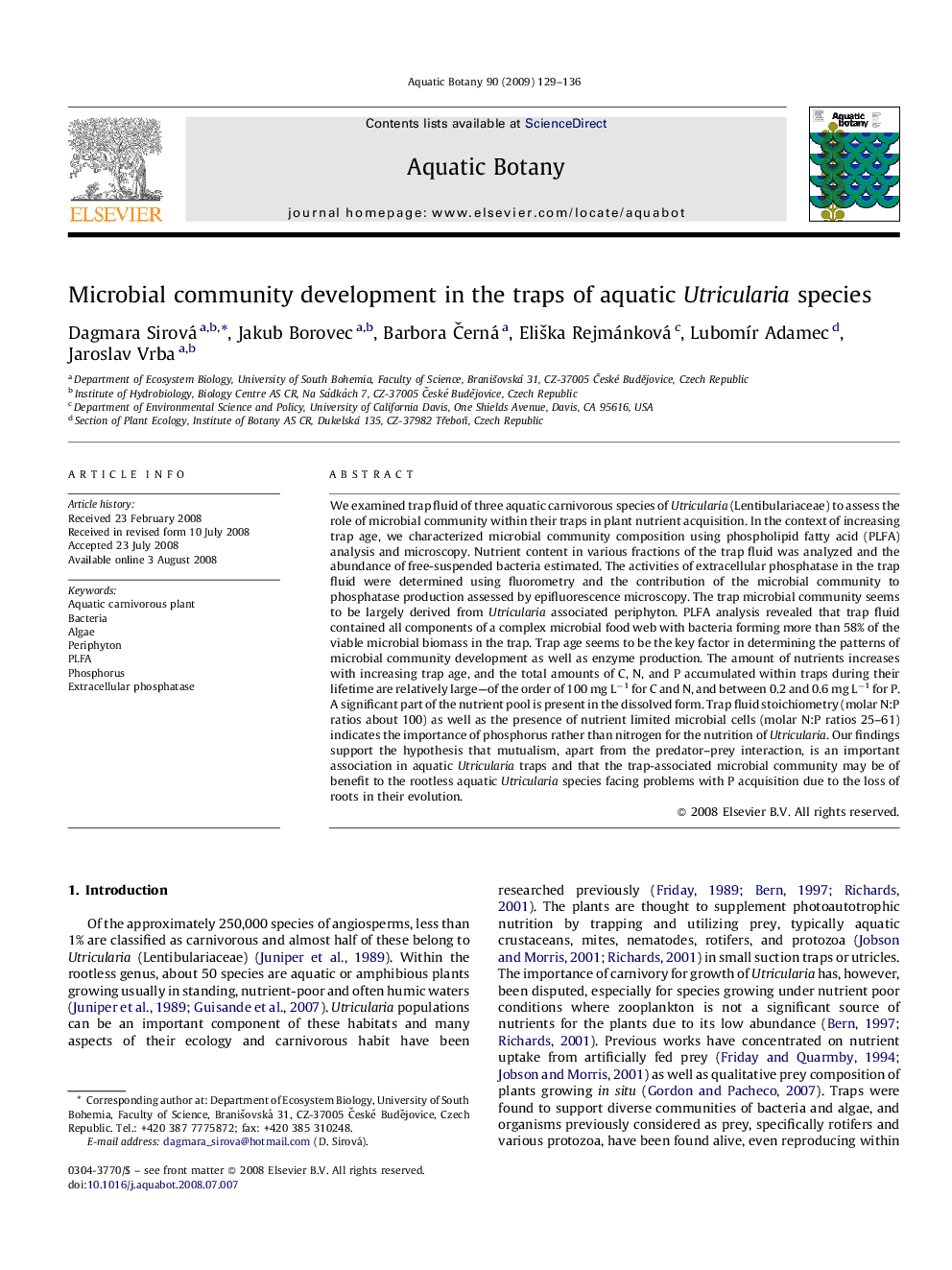| کد مقاله | کد نشریه | سال انتشار | مقاله انگلیسی | نسخه تمام متن |
|---|---|---|---|---|
| 4528514 | 1324312 | 2009 | 8 صفحه PDF | دانلود رایگان |
عنوان انگلیسی مقاله ISI
Microbial community development in the traps of aquatic Utricularia species
دانلود مقاله + سفارش ترجمه
دانلود مقاله ISI انگلیسی
رایگان برای ایرانیان
موضوعات مرتبط
علوم زیستی و بیوفناوری
علوم کشاورزی و بیولوژیک
علوم آبزیان
پیش نمایش صفحه اول مقاله

چکیده انگلیسی
We examined trap fluid of three aquatic carnivorous species of Utricularia (Lentibulariaceae) to assess the role of microbial community within their traps in plant nutrient acquisition. In the context of increasing trap age, we characterized microbial community composition using phospholipid fatty acid (PLFA) analysis and microscopy. Nutrient content in various fractions of the trap fluid was analyzed and the abundance of free-suspended bacteria estimated. The activities of extracellular phosphatase in the trap fluid were determined using fluorometry and the contribution of the microbial community to phosphatase production assessed by epifluorescence microscopy. The trap microbial community seems to be largely derived from Utricularia associated periphyton. PLFA analysis revealed that trap fluid contained all components of a complex microbial food web with bacteria forming more than 58% of the viable microbial biomass in the trap. Trap age seems to be the key factor in determining the patterns of microbial community development as well as enzyme production. The amount of nutrients increases with increasing trap age, and the total amounts of C, N, and P accumulated within traps during their lifetime are relatively large-of the order of 100 mg Lâ1 for C and N, and between 0.2 and 0.6 mg Lâ1 for P. A significant part of the nutrient pool is present in the dissolved form. Trap fluid stoichiometry (molar N:P ratios about 100) as well as the presence of nutrient limited microbial cells (molar N:P ratios 25-61) indicates the importance of phosphorus rather than nitrogen for the nutrition of Utricularia. Our findings support the hypothesis that mutualism, apart from the predator-prey interaction, is an important association in aquatic Utricularia traps and that the trap-associated microbial community may be of benefit to the rootless aquatic Utricularia species facing problems with P acquisition due to the loss of roots in their evolution.
ناشر
Database: Elsevier - ScienceDirect (ساینس دایرکت)
Journal: Aquatic Botany - Volume 90, Issue 2, February 2009, Pages 129-136
Journal: Aquatic Botany - Volume 90, Issue 2, February 2009, Pages 129-136
نویسندگان
Dagmara Sirová, Jakub Borovec, Barbora Äerná, EliÅ¡ka Rejmánková, LubomÃr Adamec, Jaroslav Vrba,